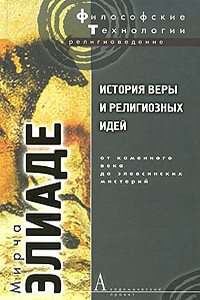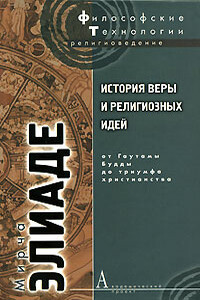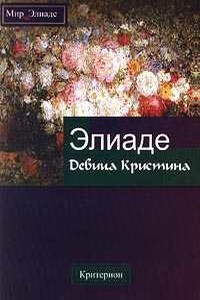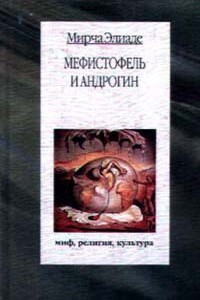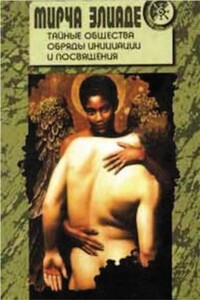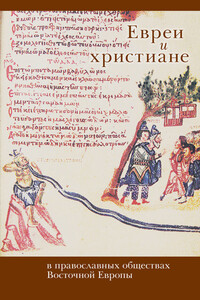Ср.: ЕЖ Monter. The Historiography of European Witchcraft: Progress and Prospects. — Journal of Interdisciplinary History, 2, 1972, pp. 435–451; Eliade. Some Observations on European Witchcraft. — HR, 14, 1975, pp. 149–172 (= Occultisme, sorcellerie et modes culturelles, перев. Jean Malaquais. P., 1978, pp. 93-124); Richard A. Horsley. Further Reflections on Witchcraft and European Folk Religion. — HR, 19, 1979, pp.71–95.[835]
Лучшим исследованием о бенанданти остается кн: Carlo Ginzburg, I Benandanti: Ricerche suUa stregoneria e sui culti agrari tra cinquecento e seicento (Turin, 1966).
Обширную библиографию по верованиям и обрядам, связанным с "рождением в рубашке", см.: Thomas R. Forbes. The Social History of the Caul. — Yale Journal of Biology and Medicine, 25, 1953, pp. 495–508.
О Wilde Heer. Victor Waschnitius. Perht, Holda und verwandte Gestalten: Ein Beitrag zur deutschen Religionsgeschichte (Vienne, 1914), особ, p. 173 sq.; Otto Hofier. Kultische Geheimbiinde der Germanen, 1, p. 68 sq; idem. Verwandlungskulte, p. 78 sq.; Waldemar Liungmann, Traditions-wanderungen: Euphrat-Rhein. — Folklore Fellows Communication, 118 (Helsinki, 1937), p. 596 sq.; R. Bernheimer. Wild Men in the Middle Ages (Cambridge, Mass., 1952), pp.79 sq., 132; С Ginzburg. I Benandanti, p. 48 sq.
Об этимологии слов zina (Diana) и zinatec (lat. dianaticus), см. критическую библиографию в кн.: Alejandro Cioranescu. Diccionario etimologico Rumano (Universidad de la Laguna, 1961), p. 915; Al. Rosetti Istoria limbii romane (Bucuresti, 1968), pp. 367–395.
О zine и iele, см., inter alia: I. Aurel Candrea. Folclorul romanesc comparat (Bucuresti, 1944), p. 156 sq.; I Muslea, O. Birlea. Tipologia folclorului, p. 206 sq.
§ 307
Из огромного множества жизнеописаний Лютера и сочинений, посвященных его эпохе, напомним несколько выпущенных в последнее время: R.H. Bainton. Here I Stand (N.Y.-Nashville, 1950); Erik Erikson. Young Man Luther (1958; блестящая, но спорная концепция; см. ее критику в кн.: Ozment. The Age of Reform, pp. 223–231); E.G. Schwiebert. Luther and his Times; The Reformation from a new perspective (Saint-Louis, 1950); RJl Fife. The Revolt of Martin Luther (N.Y., 1957); Richard Stauffer. La Reforme, 1517–1564 (P., 1970); J. Pelikan. Luther the Expositor (St. Louis, 1959); H.G. Haile. Luther. AnExperiment in Biography (N.Y., 1980; наиболее подробно описаны последние годы Лютера).
Об индульгенциях см.: J.E. Campbell. Indulgences (Ottawa, 1953); P.F. Palmer (ей.). Sacraments and Forgiveness (Westminster, 1960).
См. также: Arthur Rtihl. Der Einfluss der Mystik auf Dcnken und Entwicklung des jungen Luthers (Oberhessen, 1960); J. Pelikan (ed.). Interpreters of Luther: Essays in honor of Wilhelm Pauck (Philadelphia, 1968); Steven Ozment, Homo Spiritualis. A comparative study of the anthropology of Johannes Tauler, Jean Gerson and Martin Luther in the context of their theological thought (Leiden, 1968); F.E. Cram An Essay on the development of Luthers's Thought on Justice, Law and Society (Cambridge, Mass., 1959); 5. Ozment (ed.). The Reformation in Medieval Perspective (Chicago, 1971). См. также библиографию к § 308.
§ 308
Мы использовали последние переводы сочинений Мартина Лютера: Works, 58 volumes (рук. /. Pelikan, II.T. Lehman; Saint-Louis, 1955 sq.); см. в первую очередь vol. 25 (Lecons sur 1'EpTtre aux Romains), vol. 38 (Parole et Sacrement), vol. 42–43 (Ecrits devotionnels). Мы также использовали издание: Reformation writings, перев. и коммент. Bertram Lee Woolf (L., 1959). См. также: The Theologia Gcrmanica of Martin Luther, перев. и коммент. Bengt Hoffman (N.Y., 1980).[836]
Из последних сочинений, посвященных теологии Лютера, особого внимания заслуживают: John Dillenberger. God hidden and revealed: the interpretation of Luther's deus absconditus and its significance for religous thought (Philadelphia, 1953); R. Prentor. Spiritus Creator (Philadelphia, 1953); Bengt Hagglund. Theologie und Philosophie bei Luther und in der occamistischen Tradition (Lund, 1955);
